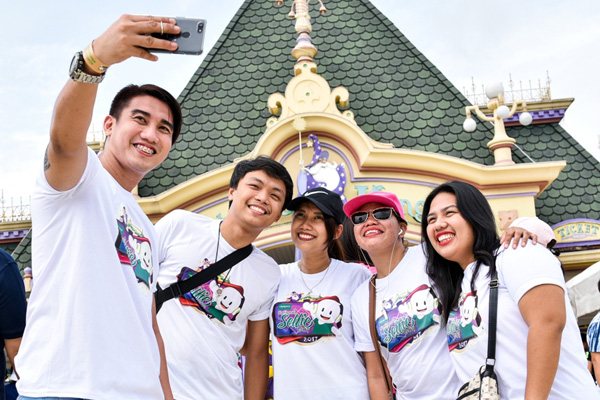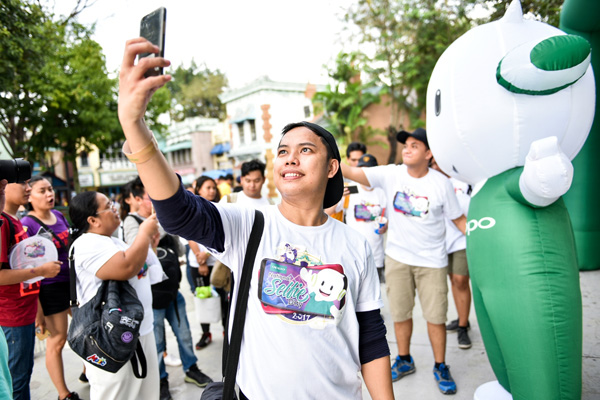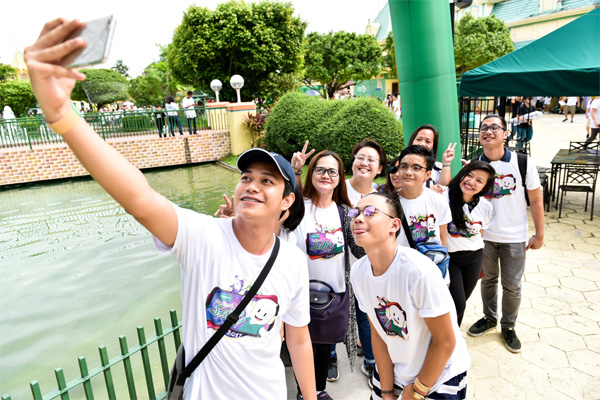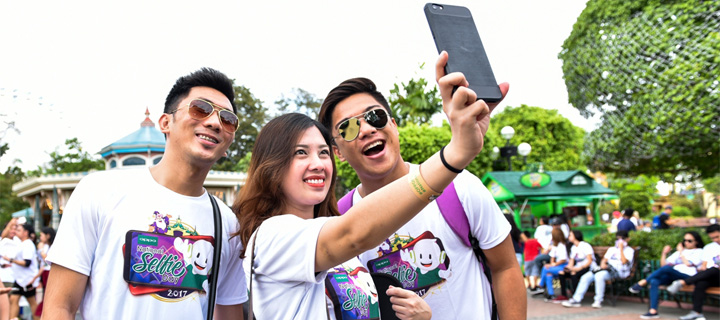MANILA, June 6, 2018 – Taking and sharing selfies—or self-portraits—is not as modern as it seems.
However, the ancient selfies were just a bit harder to come by as one would need a lot of resources, time, or skill to create their very own selfies. These days, technology has made it so much easier and faster to take a photo of one’s self on a smartphone and immediately share it with the world.
Filipinos have always taken to new tech trends like ducks to water and the selfie phenomenon is no different. The premise is so simple—just hold a smartphone with a front-facing camera about an arm’s length away, snap a photo, slap on a filter, and share on social media. It’s so simple and easy that by 2014, the Philippines (specifically Makati and Pasig) was named by Time magazine as the selfie capital of the world, with roughly 300,000 individuals out of the country’s 100 million population being active selfie-takers.

It’s 2018 and easy access to smartphones and mobile data has empowered Pinoy selfie-takers, whose numbers swell by the thousands with each new gadget release. Rising steadily along with the number of selfies taken and uploaded by Filipino netizens every second is the amount of vitriol that selfie-takers receive.
“Gandang-ganda sa sarili,” “vain,” “in love sa sarili,” “feelingera.” These are just some of the words hurled at those who take a lot of selfies. Anna[1], a 20-year-old college student with roughly 500 followers on Instagram, has been on the receiving end of these words because of the selfies she regularly shares on her social media accounts.
“Sometimes people leave negative comments on my posts,” Anna shared. “I’m not a celebrity, so why are these people bashing me?”
Selfies as a modern manifestation of Filipino traditions
For psychologist Ma. Fiona Ella G. Sandoval, MA RPsy, a licensed professional affiliated with the MLAC Institute for Psychosocial Services, there is a more positive aspect to the selfie phenomenon growing among Filipinos of all ages.
“Some recent local studies show that selfie-taking and other social media activities have a strong familial and community element among Filipinos,” Sandoval said. “More than just looking at the selfie phenomenon as an individualistic activity, let’s look at the instances when we take them. Selfie-takers usually document important moments shared with their loved ones, travel destinations, or just to share daily moments with friends and family members who live or work abroad.”
According to a Culture Trip article titled “How Manila Became the Selfie Capital of the World,” Filipino selfie-takers often produce a bulk of digital images “to satisfy familial obligations.” Family photos, groufies with friends, or selfies with famous landmarks are often taken to “reassure family of their whereabouts and safety.”

In a country where family ties are close-knit and friends are often treated as part of the family, Filipinos have plenty of special moments to document almost on a daily basis. This might explain the thousands of selfies uploaded on Facebook, Twitter, and Instagram every minute or so.
Anna agreed with the sentiments shared by the author of the article and by Sandoval. “The selfies I take usually document important moments in my life, like celebrating my birthday with my family at our favorite restaurant. There are also times when I feel good about how I look and simply want to share the moment with my friends.”
Mindfulness is key
Sandoval, however, still sees potential for selfie-takers to take their hobby of self-portraiture to a more dangerous level.
“If you have reached a point wherein taking selfies occupy most of your time and robs you of being able to savor and appreciate the present, take a short break each day from all the selfies you feel you must make,” Sandoval cautioned. “But in moderation and when appropriate—when it doesn’t take up too much of your time, doesn’t disrupt your life, and done for the right reasons—selfie-taking is for the good and can be a self-enhancing hobby. Selfies are all about keeping treasured memories in a digital format and bonding with loved ones.”
The psychologist also emphasized the importance of mindfulness, or living self-aware in the present, as key to live a more enriched life in the digital age. “As said by the monk Thich Nhat Hanh, the present moment is the only moment there is for us to be alive. Don’t wait for your digital activities to disrupt or damage your relationships or routines critical for survival,” she said.
Capturing the real you
With Sandoval’s advice, Anna is working to be more mindful about her selfies. “After listening to her, I’ve realized that selfies are not just for feeling like I’m pretty or replicating the posts of influencers and celebrities. There’s so much more to it, like communicating and relating to my loved ones through pictures.”

The college student also related to the OPPO F7 advocacy against online bashing, as led by social media and silver screen stars Julia Barretto and Joshua Garcia. The campaign is a brave stand against online negativity, especially these days when leaving nasty comments in social media posts seem to be the norm among Pinoy netizens. Barretto and Garcia encourage Filipinos of all ages to not only shrug negativity off, but to capture their real selves through the selfies that they take on the OPPO F7. This new flagship smartphone is powered by an industry-leading 25MP selfie camera with A.I. Beautification 2.0 technology that allows users to present their best selves in the most advanced, natural way.
“I am now inspired to be more mindful of the selfies I post and the comments I leave on other people’s posts. I want to capture and convey my real self on social media from now on,” Anna concluded.
[1] Name changed to protect the individual’s privacy.
Liked this post? Follow SwirlingOverCoffee on Facebook, YouTube, and Instagram.


